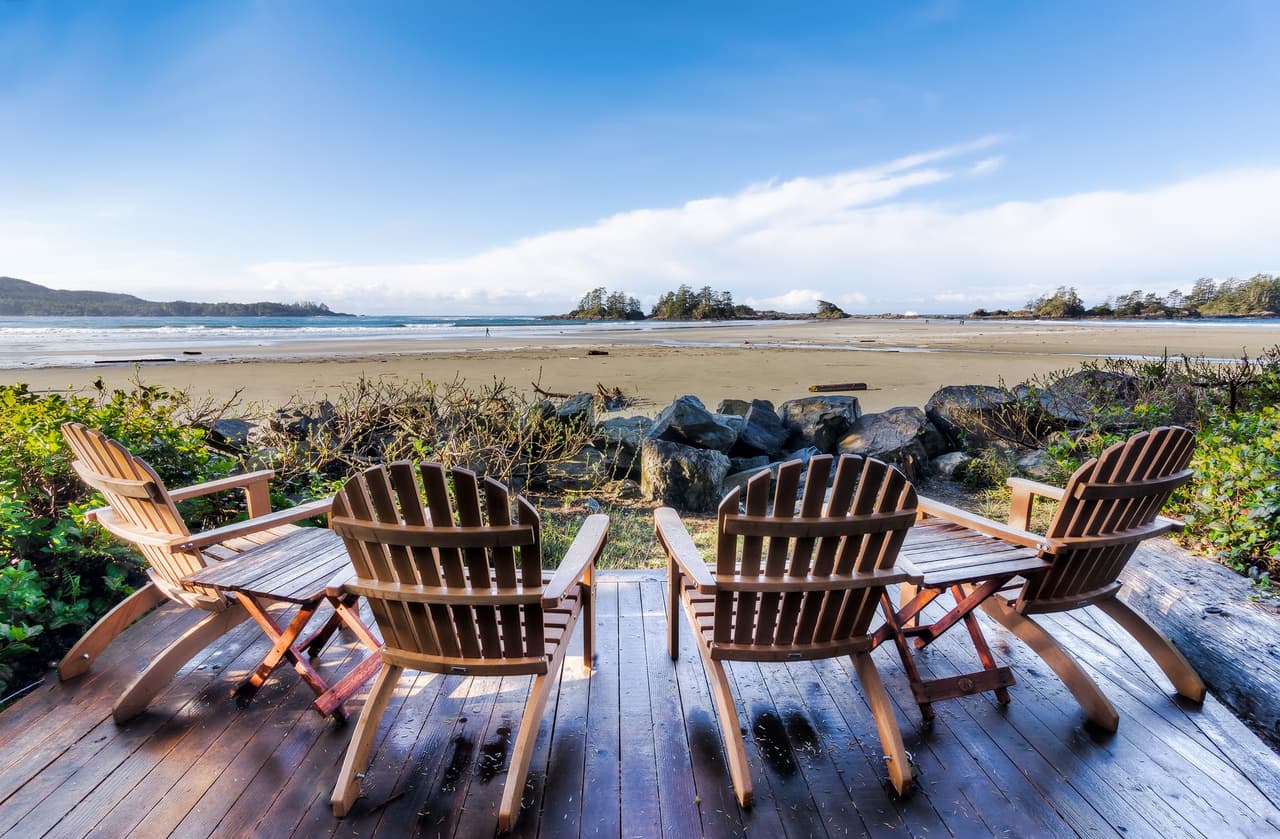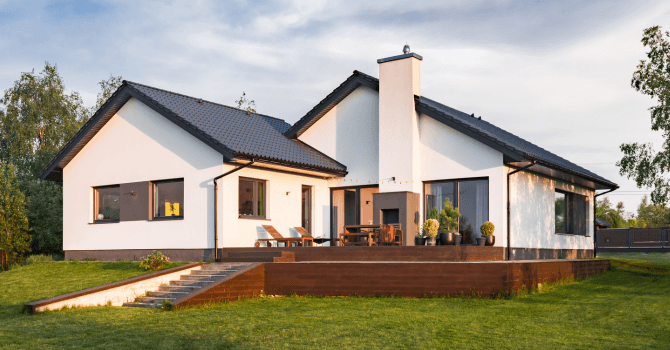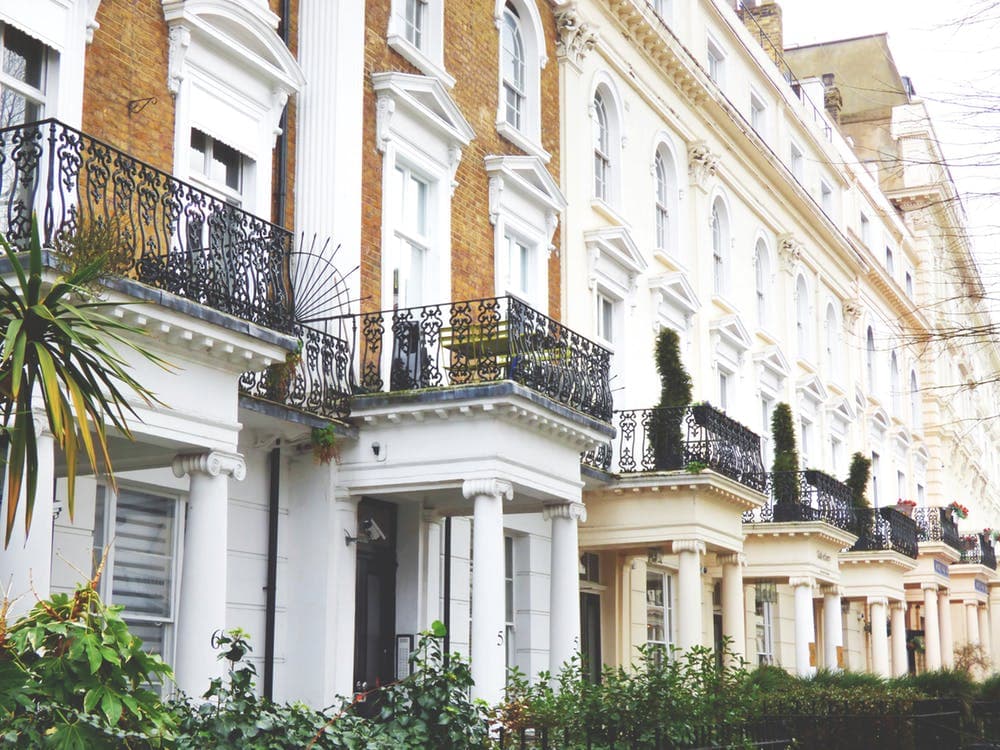Deck Building Materials and Designs
By Léa Plourde-Archer
Updated on November 7, 2023

If you’re looking to spend more time in the great outdoors this season, adding a deck to your backyard is a great way to give you, your loved ones and your family a further incentive to do so. Between talking, reading, eating, drinking and enjoying quality time together, there isn’t a better way than by building a beautiful deck outside your home.
Of course, this renovation project takes a specific skill set, tools, and time to complete. These days, decks can be built using a wide variety of materials. Some of these include fibreglass, PVC, wood and so forth.
So, how do you decide which option is best for your home? Here are some useful facts and characteristics that will help you make a choice, so read on!
Deck Building Materials: Pros and Cons

Fibreglass
Pros
Fibreglass is a great option for many reasons including versatility and durability. Here are some of the specifics:
As mentioned, fibreglass is very durable.
Fibreglass is versatile and comes in a wide variety of colours.
Maintenance is easy: most cleaning products will do the job.
Although this material requires very little maintenance, if it cracks, you’ll have to react quickly to repair the damage. If not, water infiltrations or any form of humidity will eventually create other crevices on the surface.
A fibreglass patio can last up to 20 years. After this period has passed, we recommend that you renew the material to keep your deck looking fresh and clean.
Fibreglass cannot be recycled, and therefore it isn’t the most environmentally-friendly option.
Fibreglass can be slippery, especially during the winter. For this reason, you’ll have to use salt or sand to keep the surface safe.
Cons
It's highly recommended to choose a pale colour as dark ones can become hot when exposed to the sun for a long time.
Hot temperatures can cause the product to dilate, which is a phenomenon that can cause the formation of cracks.
It's good to know that metal objects on the deck can cause rust stains.
To avoid any colour differences, it's suggested to move objects that are continuously on the patio.
Because the installation requires particular skills, it's not recommended to do it by yourself.
PVC membrane (Polyvinyl chloride)
Pros
PVC has been around for a long time and is a tried and true material. Here are the reasons why you might choose to work with it when building your deck:
PVC is available in many different colours and thus has a wide variety. This material can last anywhere between 10 and 15 years.
Other pros include the fact that PVC is waterproof, wear-resistant and barely affected by calcium and chlorine. This means it’s very practical for patios that are close to pools, hot tubs or spas.
This material can be treated to fight against UV rays using a specific product.
This material is a non-slip product, which is practical for those who walk on it.
Contrary to fibreglass, a patio that is made of PVC can become excessively hot under the sun.
Cons
PVC membrane doesn’t deal with harsh winter conditions very well. For this reason, we’d suggest that it may not always be the best option for the colder areas of Canada. Before buying PVC, do be sure to ask the retailer or the deck building contractor for their opinion on this matter. They will also give you some good advice about maintenance tips and tricks to keep it looking fresh.
Wooden deck

In another article, we talked about hardwood floors and you can find that here. If you decide to build a wooden deck, you’ll be faced with basically the same options: white pine, red cedar, ipé wood, teak, and the list goes on. Wood is a warm, rich material that fits with all types of decors.
Each style of wood has its own characteristics, grain, and distinctive elements. The wooden slats can be assembled in various ways, with each arrangement having its unique look. Also, since wood never goes out of style, you won’t run the risk of your deck looking outdated after just a few years.
Currently gaining traction and a popular type of wood on the market is red cedar. Even though it’s more expensive than treated wood, it offers considerable benefits. First, the oil this wood releases greatly will reduce its tendency to deteriorate as a result of mould. Further, the oil helps protect the wood against harmful insects. Since nature has already given red cedar its tools to fight against pests and fungi, you won’t have to use chemical treatments.
Types of Wood Used to Build Decks
Treated wood
Pine is commonly used as the main component of treated wood. This type of wood is very solid and resistant.
Treated wood has an excellent price/quality ratio but if it gets damaged, it will require quite a bit of money to repair.
If you choose this material, you must apply a stain every 3 to 5 years to give the deck a new finish and protect it from the wear and tear of living outdoors.
Torrefied wood
This type of wood is heated to extreme temperatures to modify its properties without the use of chemical products.
Do bear in mind that it requires special maintenance techniques to preserve its colour, which unfortunately tends to fade due to sun rays.
Composite wood
Composite is a mix of wood fibre, recycled plastic (often plastic bags) and artificial polymers.
Given its mixed composition, it’s very resistant to humidity and decay.
Another important characteristic is the fact that this material does not attract fungus or termites.
Composite wood is also a great option if your deck is linked to a pool, as it has anti-slip properties and doesn’t absorb too much of the sun’s heat.
The price of composite wood can be on the higher end of the scale. Not only this, but you have to love it because it’s not possible to change its appearance.
In terms of maintenance, an annual clean-up is recommended, or even two, if possible.
The main drawback when it comes to using wood for exterior projects is that it tends to expand and contract along with the outdoor humidity level. You must check the fasteners of your deck regularly as well as the different parts including the railings and boards to make sure that they are still firmly installed.

Aluminum deck
Aluminum is not the most popular material when it comes to building a deck, but in recent years it has gained popularity. There are many good qualities when it comes to this material, and they are as follows:
Aluminum does not rust, warp, splinter, or crack. Therefore, this material is quite durable.
It is also weather-resistant, mould-resistant, fire-resistant, and slip-resistant. Therefore, it’s an excellent option in most weather conditions including freezing temperatures as well as next to pools, hot tubs and so on.
This material is light to the touch and thus, much easier to install than most of the others mentioned. Not only is it lighter, but it’s stronger.
You might be worried about working with this material because it’ll heat up in the hot sun. Aluminum stays cooler in the sun than most other materials because of its heat-dissipation properties.
Deck Shape and Features
From lattices to handrails, as you start planning the setup of your deck, think about accessorizing and picking elements that will suit your needs and tastes. Make a list of everything you want to include on your deck. Consider if you’d like to install a barbeque or place furniture. In doing so, you’ll be sure to have enough space to accommodate everything. It’s much easier to choose the shape and size according to how you want to use it, instead of planning your deck-building project in the opposite fashion.
*Note that if you choose a dark colour for your patio, over time the sun may affect the colour. If you truly have your heart set on a darker shade, try to move around your furniture so the same areas aren’t always being exposed to the light.
Once you’ve taken care of every aspect of your deck renovation project, choose your contractor through our service. Then, you can rest assured they’ll have all the licenses and insurance required to complete this type of work.
To learn more about our selection process, read our article How to Find the right Contractor for Your Renovation Project. For more about building codes applying to decks, check out this article by the hardware specialists at Lowe’s.
Cost of Building a Deck
Treated wood patio: approx $6.50 to $9 Installation: approx $60 to $70
Western red cedar patio: approx $4.50 Installation: $42
Torrefied wood patio: approx $6 to $12 Installation: approx $60 to $70
Paver stone patio: approx $4.50 to $11 Installation: approx $18 to $30
Get 3 renovation quotes for your deck renovation project
RenoQuotes.com can help you get quotes for your backyard deck project. If you submit your project to us, we’ll put you in contact with 3 qualified professionals. Fill in the form on our homepage (it only takes a few minutes), and you will receive quotes from top-rated renovation companies.
Dial 1-844 828-1588 to speak with one of our customer service representatives
Looking for something else?
Related articles
The latest industry news, interviews, technologies, and resources.

Editorial Team
•07 Nov 2023
Hello, and welcome back to our monthly entry about the best articles on interior design, decor and renovations! If you are new to this series, here is a quick recap: each month, we dedicate ourselves to finding the best articles on the internet to inspire you in your design and renovation projects.

Editorial Team
•03 Nov 2025
Whether for your growing family, for the arrival of a long-term house guest, or simply due to a lack of space, the reasons behind building a home addition are plentiful. Amongst the many possible solutions presented to those wishing to build a home extension, there is the home addition on screw piles.

Editorial Team
•07 Nov 2023
Outdoor columns on the facade of your home add an element of originality and allure. Whether used for your landscaping, porch or walkways, incorporating columns into your design can have a lasting appeal. However, since these columns are outdoors, they are exposed to various forms of weather damage. Therefore, it’s important to know how to care for your outdoor columns.

Editorial Team
•31 Mar 2025
Are you a homeowner with an oil-fueled heating system? Note that replacing this type of heating system comes highly recommended. If it’s money that’s standing in your way, rest assured, there are financial assistance programs designed to help you achieve your goal.

Editorial Team
•05 Feb 2024
Vinyl paint is grouped with similar water-based coatings and is considered a high-quality paint. From its adherence to its coverage, but ultimately, its ability to texturize surfaces makes it a decorator’s dream.